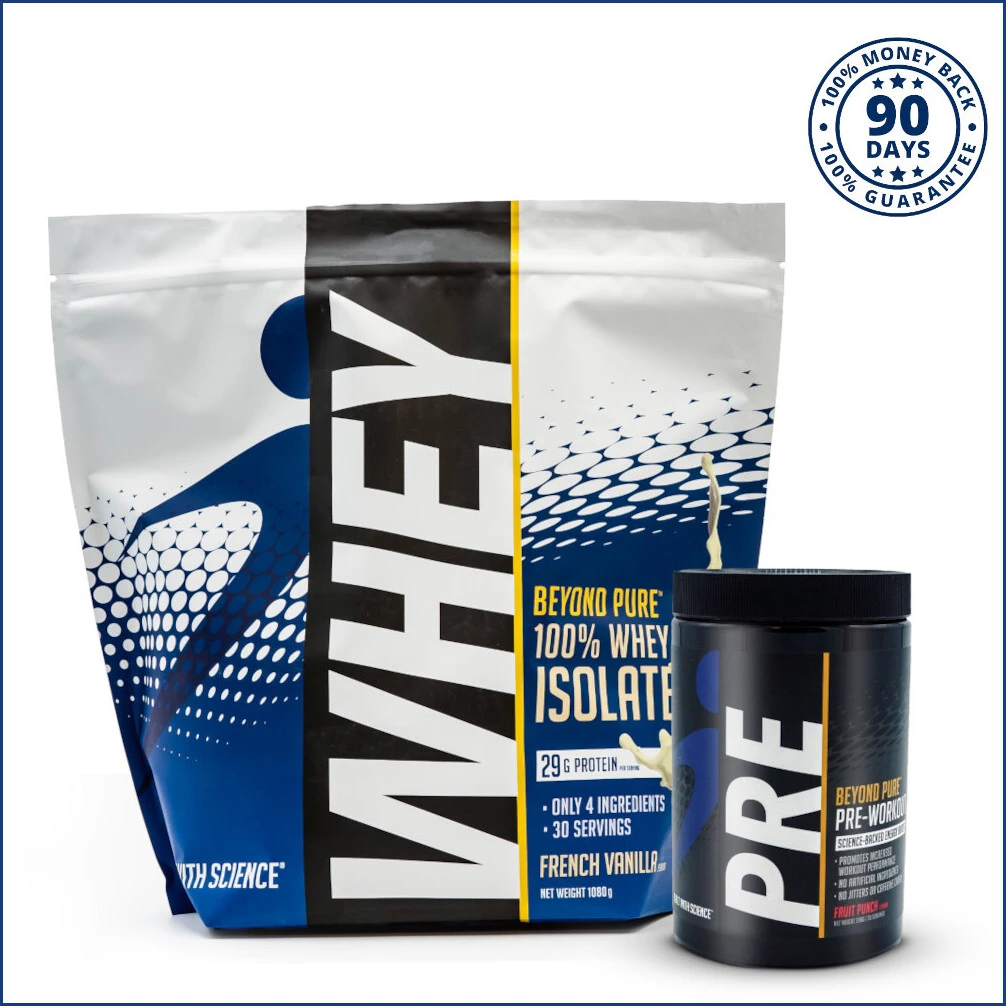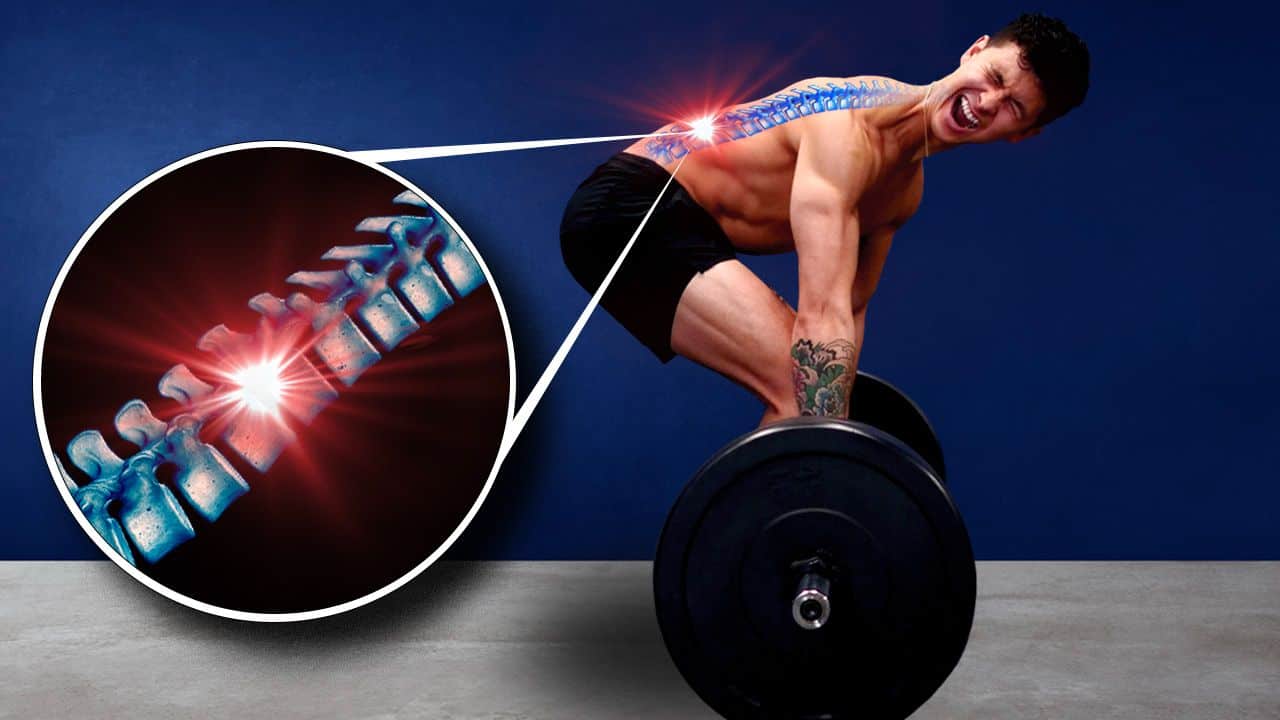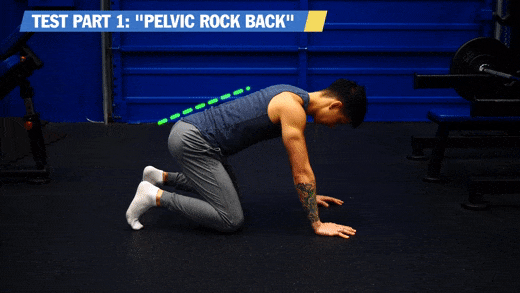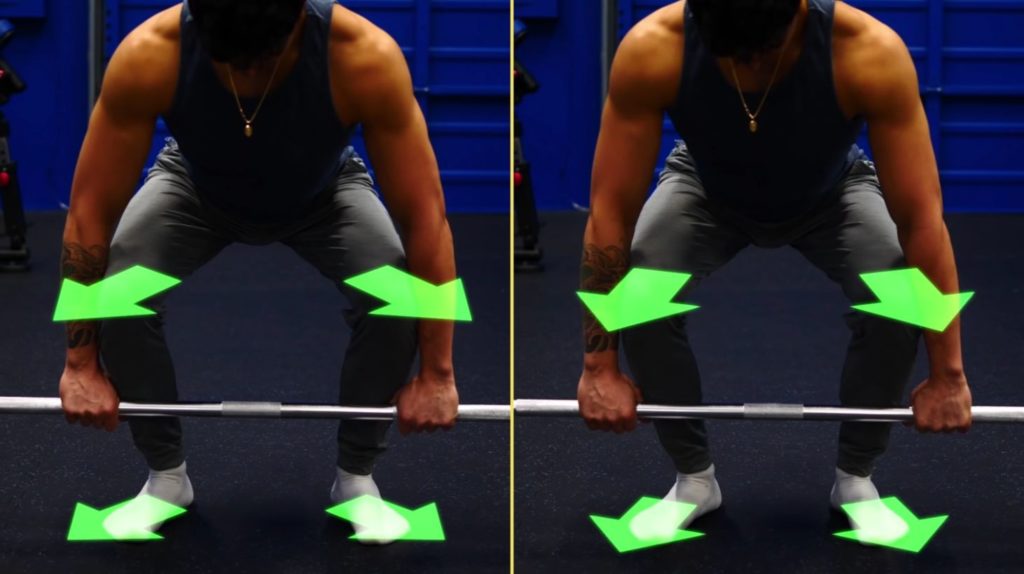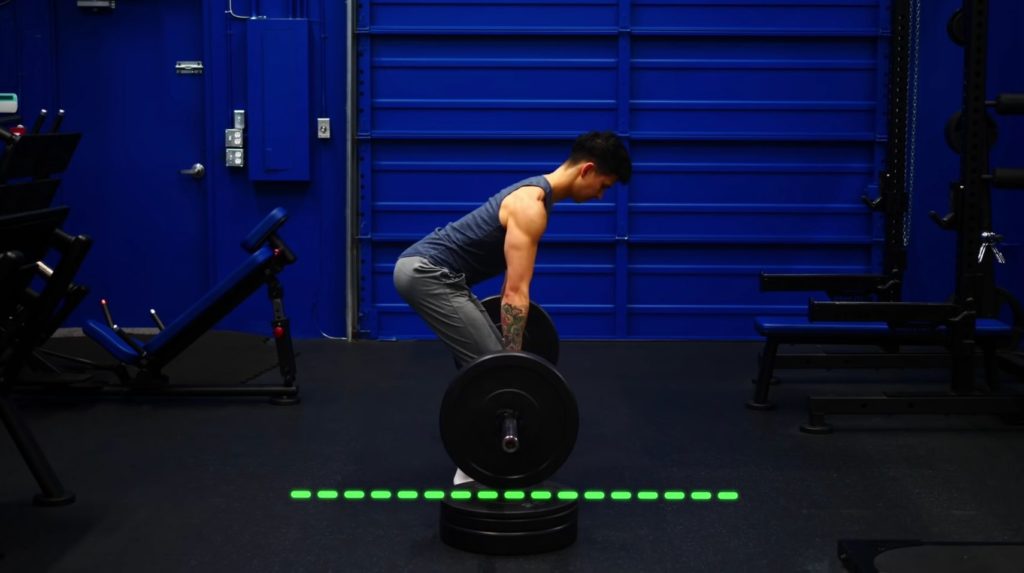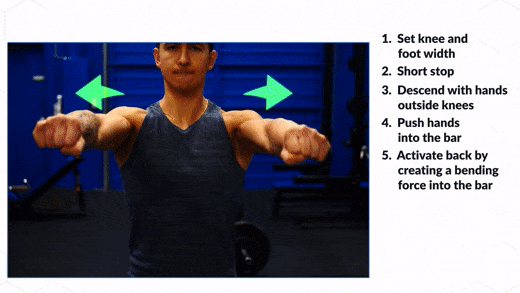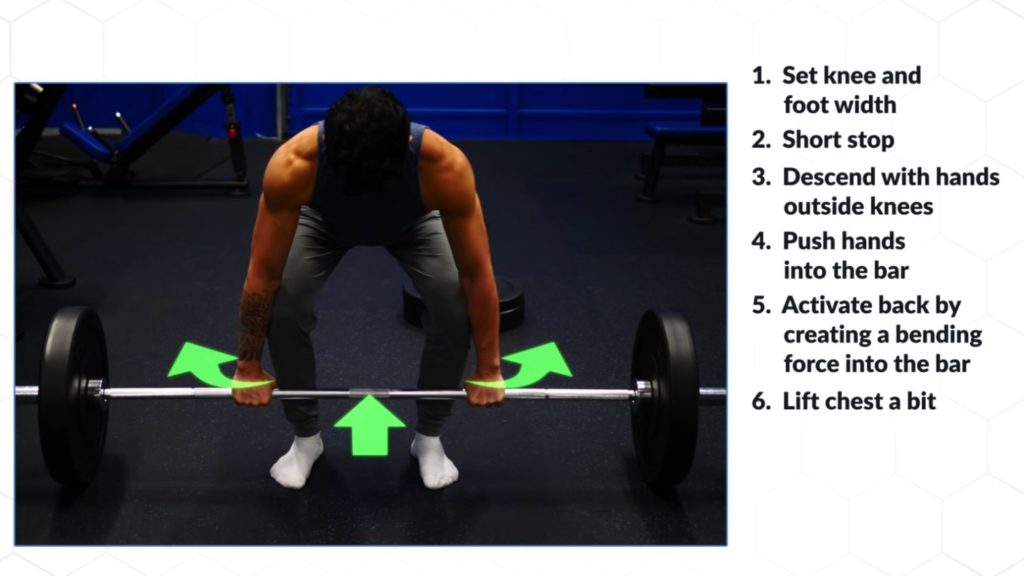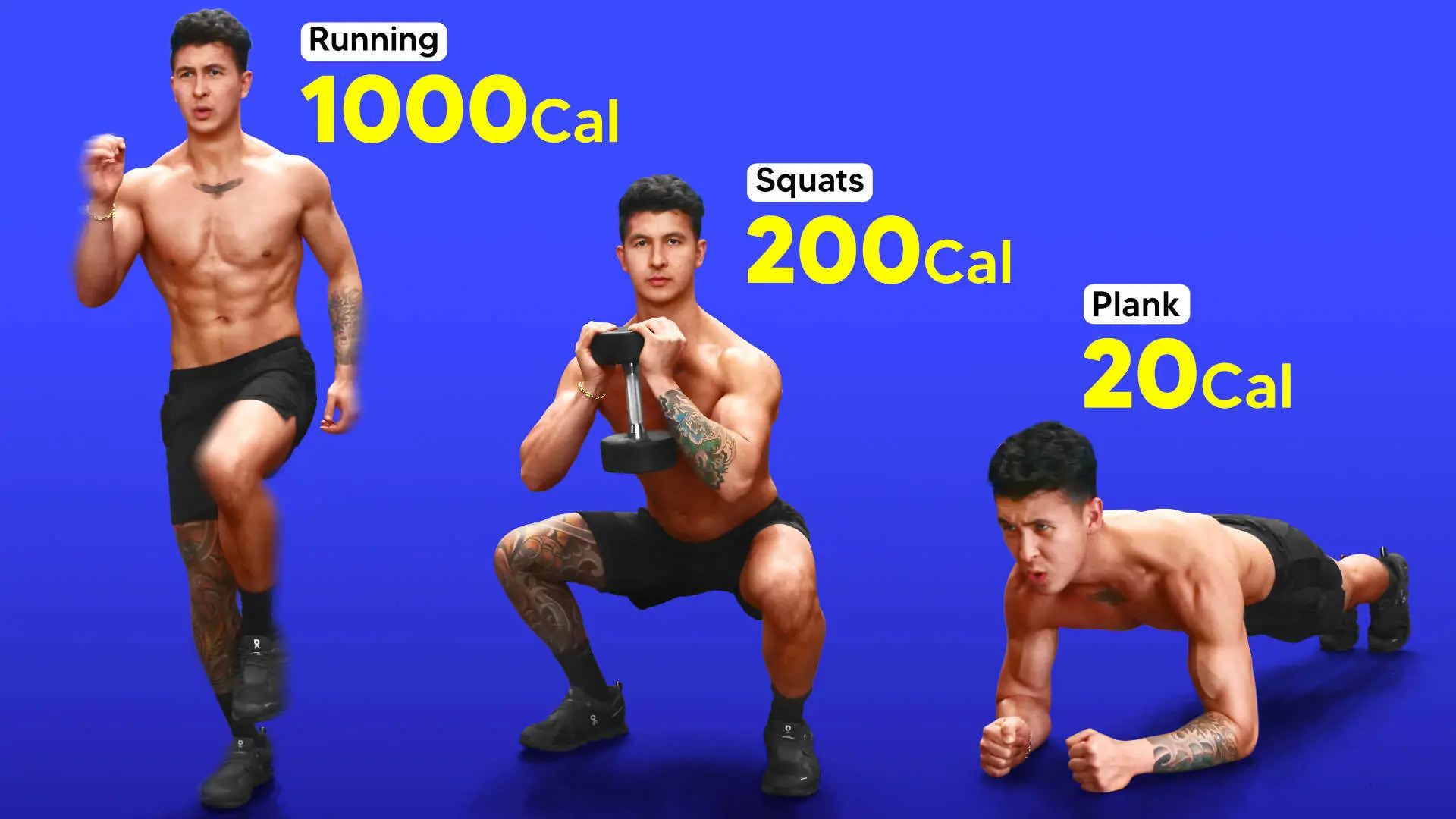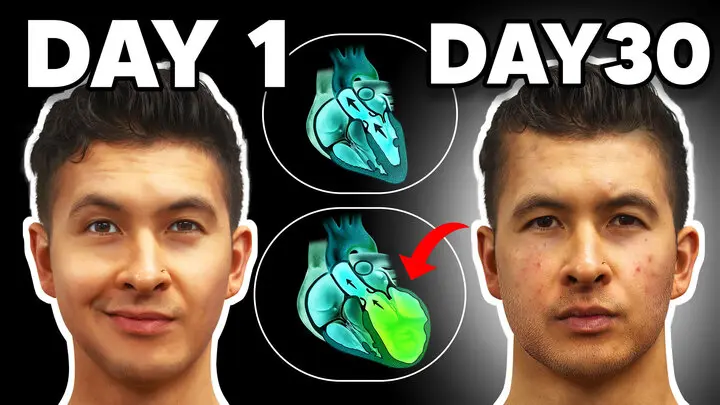5 Reasons Why The Deadlift Hurts Your Back (Fix Your Form!)
Struggling with a deep-set fear of hurting your back on the deadlift? Or have already hurt your back (at least once) before? Your deadlift form needs fixing. This article walks you through the process.
If you’ve ever hurt your back deadlifting or are afraid to do them in fear that you will end up hurting yourself, you’re not alone. There are 5 reasons why so many people struggle with poor deadlift form and end up injuring themselves with this exercise. In this article, I’ll share with you:
- What these reasons are
- How to determine the "correct" deadlift form for your body AND
- How to do the deadlift in a safe manner that helps - instead of hurting - you
But of course, if you’re not just looking to fix your deadlift form, then you’d benefit from one of our programs. These go through, step-by-step, how you can perform every exercise with perfect form (based on your unique body structure) so you experience unparalled gains:
Click the button below to take my analysis quiz to discover the best program for you:
↓
Why Are Deadlifts So "Dangerous"?
We all know deadlifts for their many benefits and back strengthening properties. So, why do people still perceive deadlifts as a "dangerous" exercise to perform?
A primary reason is the hard-to-look-at-ego-driven deadlift form I’m sure we’ve all seen at the gym or have been guilty of doing at some point in our lifting careers.
Here's the thing. Rounding the back during the deadlift is actually a popular method that elite powerlifters often use to lift more weight. But for the not-so-elite average lifter who isn’t conditioned to lift that way, though, the safest deadlift form still necessitates a neutral spine.
The only problem? It’s all too easy to lose this neutral position. Imagine what happens when you don't have enough strength to complete a lift in a bench press or squat. You simply won’t be able to complete the lift. It's as easy as that. But the same doesn't hold for the deadlift. That's because rounding the spine actually makes the lift easier.
Coupled with the fact that you’re not actively looking at your spine in the mirror, and it just becomes super easy for you to round your back when performing the deadlifts (without even realizing it). Plus, throw in the following two factors:
- A heavy load
- The lack of back and core strength to support your spine
... and you have the perfect recipe for a back injury.
This is further complicated by something else. Something unavoidable - and that you're born with. Your hip bone structure. More specifically, certain individuals' hip bone structure makes it virtually impossible for them to maintain a neutral spine with the traditional deadlift form.
How To Fix Your Deadlift Form
So, what can we do about it? Well, I’ve brought in world-renowned back pain expert Dr. Stuart McGill, who has studied the science of back pain for over 30 years. He’s also worked with several elite powerlifters. These include Brian Carrol and Andy Bolton, the first man to deadlift 1000 lbs. Dr. Stuart has also helped them recover after suffering debilitating injuries throughout their careers.
Together, we’ll dive into the 5 primary contributing reasons for poor deadlift form, and how you can avoid them. This lowers your risk of suffering from any debilitating back injuries down the road.
#1: Modify Your Stance Based On Your Hip Structure
The first reason for poor deadlift form has to do with your hip structure.
Some individuals are born with deep hip sockets. These individuals tend to have the most trouble getting into and pulling from the bottom position of a deadlift - especially when using a narrow foot stance. Trying to get deeper than their hip anatomy allows leads to a pinching sensation in their hips. This stops them from getting any deeper without rounding at the lower back.
In contrast, other individuals are born with more shallow hip sockets. These individuals are generally better suited for deadlifting and squatting because the hip is more mobile. Hip mobility makes getting into and coming up from the bottom of a deadlift or squat much easier. As a testament to this, many great Olympic lifters are born in regions like Bulgaria, Poland, and Ukraine. These countries' populations are known to have the highest rates of shallow hip sockets compared to the rest of the world.
Now, this doesn’t mean that those with deep hip sockets shouldn’t deadlift. They do, however, have to modify their stance to ensure that they aren’t compromising their lower back given their limited mobility.
How To Find Your Optimal Stance For Proper Deadlift Form
Here's what Dr. Stuart advises about finding the optimal stance:
“To find the optimal stance and type of deadlift for you and your hips, there is a simple test we can do.
To perform it, get onto all fours with your hands directly under your shoulders, knees under your hips, and ideally with your feet against a wall. From here, try to sink your hips back into heels as deep as you can without rounding your lower back. Make note of how that feels and how far you could go.
You can set up a camera or look at a mirror beside you to check the point where your lower back starts to round. Then, simply play around it. Try keeping your feet in place but turning your knees out, and see how that feels. Or, try widening both your knees and feet a little bit and see how that feels.
Try to find that sweet spot position that feels the best and allows you to get the deepest without rounding at your lower back. Once you’ve found that position, stand up and make note of how far apart your feet were and the angle your knees were turned out at.
That will now be the safest deadlift stance for you to use.”
Generally, those with deeper hip sockets will find the most comfort with:
- A fairly wide stance AND
- With the feet turned out
Sumo deadlifts tend to be a good option for these individuals as well.
However, some individuals, won't be able to find that sweet spot position regardless of what stance they try. And will always have trouble getting into the bottom of a deadlift without compromising their lower back. This is where the next cause of poor deadlift form (and injury) comes in.
#2: Shorten Your Range Of Motion Where Necessary
The bar sits 8.75 inches above the floor when using standard 45-pound weights on each side. This exact height was a manufacturing decision made long ago. Its purpose was to protect Olympic weightlifters from crushing their skulls in the event of an overhead lift gone wrong.
Admittedly, it's a smart design feature. But being able to safely deadlift from that height requires you to either have:
- The necessary range of motion OR
- Right body structure
And if you’re using smaller weight plates? Then the required range of motion increases further. So, rather than forcing your body to pull from the ground, find ways to shorten the range of motion. This will enable you to perform the deadlift comfortably with perfect form.
But how do you shorten the range of motion? Well, you can elevate the bar onto blocks, a power rack, or 10, 25, or 45-pound weight plates.
Then, after a month or so, try lowering it slightly by using a smaller weight plate and see how that feels. If that goes well, great. Build from there and continue lowering.
However, if that causes back pain or breaks down your form, then go back to the higher plates. Continue using that to comfortably deadlift. Remember: only powerlifters are required to pull from the floor. So, don’t risk forcing yourself to do the same if you’re just not built for that.
There are always "workarounds" for exercises based on your unique body structure. But knowing what they are - along with when you shoul incorporate them in your training program - is tricky. That's why I've designed all Built With Science programs to guide you through your training process in a step-by-step manner:
Click the button below to take my analysis quiz to discover the best program for you:
↓
#3: Create The "Lifter's Wedge" For Stiffness In Your Deadlift Form
You need to create the “lifter’s wedge” before you pull. Regardless of your body structure and the type of deadlift you use. Popularized by Dr. Stuart McGill, it’s a foolproof way to:
- Protect your back throughout the lift AND
- Unlock the power of your hips
Failing to do this is why many end up pulling with their back right from the start of the lift. Dr. Stuart shares how you can execute it:
“When at bottom position, find a neutral spine and the bring bar as close to shins as you can.
Then, think about bending the bar to engage lats/pecs.
This will provide the counterbalance needed to “pull” your chest up and hips down, “wedging” yourself between the floor and the bar. As you do this, it will take slack out of the bar and you’ll have already performed 95% of the lift.
From here, you simply apply 5% more effort by pushing your feet into the ground and bringing the hips through to complete the lift.“
When the lifter’s wedge is properly applied, your lats and hips should be working hard before the weight is even lifted. At this point, you’ll have already performed 95% of the lift. From here, you simply apply 5% more effort. You do so by pushing your feet into the ground and bringing the hips through to complete the lift.
Now, this technique will help prevent you from lifting with your back. But it’s often compromised by the next mistake people make.
#4: Only Use More Weight When You've Earned The Right To
Perfecting your deadlift form and strengthening your protective back and core muscles takes two important things. Time and repetition. During this process, many let their ego get in the way. And will try to lift loads that exceed their ability to maintain a neutral spine and stiffness throughout the pull. Here’s Dr. Stuart’s recommendation, inspired by a Russian protocol:
“If we follow the Russian philosophy, you start by lifting a broomstick. Don’t let your ego get in the way.
If you can lift the broomstick with perfect form, you’re now allowed to lift an olympic bar. If you lift that with perfect form, you’re now allowed to put half a cookie on either side (a small weight). As long as you keep good form, you earn the right to have more weight.
Now if you get tired and you break form, you’re not allowed to lift anymore.”
As Stu put it, earn your right to have more weight. Focus on keeping good deadlift form, rather than how much weight you’re lifting. And you’ll get to your goal faster while mitigating injury.
#5: Be Mindful Of Your Level Of Lower Back Soreness
Now, what if you’ve applied everything we went through to your deadlift form - and are still experiencing “low back pain”? Well, your lower back muscles may just be adapting to the exercise. Note: this is only applicable if it’s not a sharp shooting pain.
Even though your back isn’t actively moving, it is heavily involved in stabilizing your body as you lift. And, considering that most of the general population:
- Sit at a desk OR
- Are hunched over for the majority of the day
... being put into a neutral spine position and lifting weight with good form will turn these muscles on and work them like never before. My advice is to pay attention to the level of soreness you get after your first few sessions.
If it is just a matter of your back muscles adapting, then the soreness you experience after a session will decrease more and more over time. But if it doesn't? Or, if one day you feel a lot more low back soreness than usual? Then it’s an indication you’re breaking that neutral spine position during your lift. And you'll need to modify your deadlift form.
Takeaway
I hope you guys were able to see just how much the details matter for every exercise you do. It not only keeps you healthy and injury-free in the long run, but it gets you results faster.
And if you’re looking for a program that applies this to transform your specific body safely and effectively with science, then:
Click the button below to take my analysis quiz to discover the best program for you:
↓
A big thank you to Dr. Stuart McGill for his help with this article. This man’s knowledge is incredible. And for those interested in improving their powerlifting technique from a back health perspective, I’d highly recommend you read these two books of his:
Thanks for sticking around guys! I hope you enjoyed this one, and check out more of my past articles here:
- "My Delts Muscle Isn't Growing (The 4 Reasons Why)
- Blow Up Your Rear Delts (3 Quick Exercise Tips For Faster Gains)
- 14 Best Exercises To Build The Perfect Back
I’ll see ya next time!



